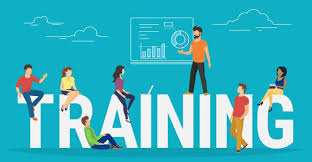Editor’s note: As we ended a difficult and unique year and entered a new one, the Training Industry editorial team asked learning leaders to write in with their reflections on 2020 and predictions for 2021. This series, “What’s Changed and What Hasn’t? Taking Stock of 2020 and Planning for 2021,” is the result.
While the COVID-19 crisis accelerated the shift to more distributed teams, the writing has long been on the wall. The definition of work needed to transition from where you go to what you do. Flexible work will prevail far beyond the wide availability of a vaccine.
As it relates to training, this evolution has been the driving force of the major themes over the past decade: bring your own device (BYOD) policies, microlearning, learning in the flow of work and digital transformation, to name a few. In other words, the ongoing transition from sitting in a classroom to learning by doing has not changed — so what has?
There are several major disruptions that are reframing what it means to train and be trained:
- Democratization of Learning
The consumer market, starting with YouTube and increasing with TikTok, has taught us that everyone can be a creator. Everyone has expertise to share or a story to tell, and consumers prioritize authenticity and access over high production values. In fact, training and marketing that is too polished is a turn-off. Instead, according to this year’s LinkedIn “Workplace Learning” report, workers, especially members of Generation Z, want training to be social and collaborative.
Brilliant insights can come from anywhere, and “by the field for the field” content will begin to replace top-down, “talking head” training sessions. Imagine a retail employee who posts a short video of a new display so her counterparts across the nation can see it and be inspired or sharing a brief customer story that shows the company’s values in action and opens her up for kudos and ideas from leaders and peers alike. Video democratization platforms can unlock insights in real time that organizations previously lost, and those short videos can bring the humanity, familiarity, authenticity and access that today’s workers crave.
Flexible work will prevail far beyond the wide availability of a vaccine.
- Asynchronous Learning
If there is one thing lockdowns and working from home taught us, it’s that video calls are draining — but a lot of work and learning can happen asynchronously. Modern training professionals can take a page from all-remote companies’ books. For example, GitLab highlights a large number of benefits that organizations can unlock by transforming learning and development (L&D) to an asynchronous process, including:
-
- Speed: “You don’t have to wait for a cohort to be in the same place at the same time to administer updated material.”
- Consistency: Remote companies must have excellent documentation. As a result, onboardingdoesn’t rely on a meet-and-greet that is heavily influenced by the day’s pressing issues.
- Inclusivity: Remote settings mean that employees can learn in the environment that works for them. “This allows those who struggle to focus in group settings, or who have mobility concerns, to embrace education that they may opt out of if the setting weren’t ideal,” GitLab notes.
The shift toward asynchronous learning aligns with the trends in L&D budgets, which have moved from classroom training to online learning over the past decade, according to the LinkedIn Learning report. However, learner engagement is a concern when training moves out of the trainer’s sight. It’s critical to make asynchronous content relevant, so learners are inspired to interact with it.
- In-the-moment Learning
The managers that L&D leaders serve are demanding timely, digestible training and job support. Topics like new competitive positioning needs to be in the hands of frontline sales and customer success reps immediately, not after a long and formal production and distribution process. According to Gallup’s report “How Millennials Want to Work and Live,” millennials don’t want bosses; they want coaches. The old command-and-control management approach no longer works.
“Coaching should happen in the moment and at every opportunity,” says Walter Rogers, chief executive officer of CCI Global Holdings, the Salesforce article “The 16 Do’s of Highly Effective Sales Managers.” Top performers are, of course, in high demand to provide coaching. The challenge is that those same people need to spend the majority of their time doing their own jobs to ensure business success. Enabling them to share up-to-the-minute thoughts, insights and best practices on their terms, and in a one-to-many format, is critical.
All of these themes tie together. Modern employees enter the workplace with new expectations. Social media platforms, for all of their potential ills, have democratized content creation, relevance and accessibility. Modern L&D approaches need to adapt accordingly and meet learners where they are. The new norm of remote and flexible work has only intensified the need to evolve.
By Rachel Lanham
 العربية
العربية





